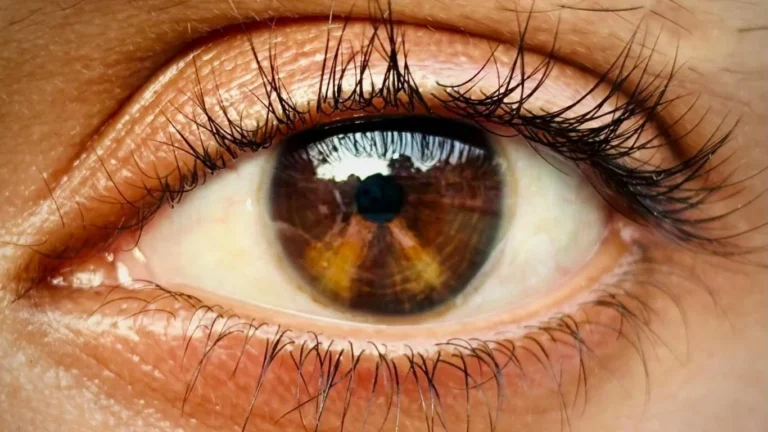How Mental Health Therapy Reduces Hypertension: Powerful Insights and Tips
As a hypertension expert, I’ve seen firsthand how chronic stress and mental health issues like anxiety, depression, and PTSD can contribute to the development of high blood pressure. It’s no secret that managing mental health can be just as important as physical health when it comes to preventing and treating hypertension. But how exactly does mental health therapy affect hypertension? Well, let’s dive into it.
Understanding Hypertension: The Silent Killer

Hypertension, often referred to as high blood pressure, is a common condition that affects millions of people worldwide. In simple terms, it occurs when the force of your blood against the walls of your arteries is consistently too high. Over time, this can lead to serious health complications like heart disease, stroke, and kidney damage. Yet, hypertension often goes unnoticed because it doesn’t usually present obvious symptoms, earning it the nickname “silent killer.”
The Connection Between Mental Health and Hypertension
We all know stress is a major part of modern life, and it can trigger all sorts of physical reactions. But did you know that stress and mental health problems can directly influence your blood pressure? Emotional stress, whether it’s caused by work pressure, relationship issues, or underlying mental health conditions, can cause your body to release stress hormones like cortisol and adrenaline. These hormones increase your heart rate and narrow your blood vessels, leading to temporary spikes in blood pressure.
Now, here’s where things get interesting. The impact of mental health therapy—whether through talk therapy, CBT (Cognitive Behavioral Therapy), or other therapeutic approaches—can significantly help lower those stress hormone levels and regulate blood pressure.
How Therapy Helps: The Mechanisms Behind the Effect

When we talk about therapy, we’re not just talking about casual chit-chat. The real magic happens when a skilled mental health professional helps you recognize and reframe negative thought patterns that contribute to stress. Let me give you a quick example from my practice. Many of my patients dealing with hypertension also experience chronic stress or anxiety. Through therapy, they learn how to manage these feelings and reduce the emotional weight they carry day-to-day. And when they feel better emotionally, their blood pressure often drops too.
Cognitive Behavioral Therapy (CBT): A Powerful Tool for Hypertension
One of the most effective therapies I recommend to my patients is Cognitive Behavioral Therapy (CBT). This type of therapy is designed to help individuals identify and change destructive thought patterns and behaviors that contribute to their stress and anxiety. CBT has been shown to be particularly effective in reducing anxiety, which is a major contributor to hypertension. Studies have shown that people who undergo CBT often experience a reduction in both their symptoms of anxiety and their blood pressure levels.
Reducing Stress Through Mindfulness and Meditation
Another therapeutic approach that I often suggest is mindfulness and meditation. These practices have gained a lot of popularity in recent years, and for good reason. Mindfulness involves focusing on the present moment without judgment, while meditation helps calm the mind and body. Both of these techniques have been shown to reduce stress hormones like cortisol, which can help bring your blood pressure back to a healthier range. Research has demonstrated that just a few minutes of daily mindfulness can lead to significant reductions in both stress levels and blood pressure.
The Role of Medication in Mental Health Therapy and Hypertension

It’s also important to note that while therapy is extremely helpful in managing mental health and hypertension, medication may sometimes be necessary. Antidepressants, anti-anxiety medications, and other psychiatric drugs can assist in reducing symptoms of mental health disorders that are contributing to high blood pressure. However, therapy is usually considered the most sustainable, long-term solution for addressing the root causes of stress and emotional distress.
Combining Therapy with Lifestyle Changes for Better Results
Therapy alone might not be enough to manage hypertension. It’s crucial to incorporate lifestyle changes to complement the mental health strategies you’re using. Regular physical activity, a balanced diet, and adequate sleep are all essential in managing blood pressure. When you combine these habits with the therapeutic strategies we’ve discussed, you’ll see even more significant improvements in both your mental and physical health.
In the next sections, we’ll dive deeper into specific therapy techniques and explore some real-life case studies of individuals who’ve successfully managed their hypertension through a combination of mental health therapy and lifestyle changes.
Real-Life Success Stories: Mental Health Therapy and Hypertension Management

Now that we’ve discussed how mental health therapy can impact hypertension, it’s time to look at some real-life examples. As a hypertension expert, I’ve seen many patients improve their blood pressure significantly by addressing mental health issues. It’s amazing how therapy can transform someone’s life, not just mentally but physically too.
A Case Study: Stress, Anxiety, and High Blood Pressure
One patient who comes to mind is Emily, a 42-year-old woman who had struggled with anxiety for most of her adult life. She came to me initially complaining of headaches, dizziness, and an occasional racing heart. After checking her blood pressure, I found that it was significantly elevated. She had no history of hypertension in her family, but her mental health struggles were clearly taking a toll on her body.
Through therapy, Emily was able to work with a counselor who specialized in Cognitive Behavioral Therapy (CBT). Over the course of several months, she learned techniques to manage her anxiety and stress. She began journaling, practicing mindfulness, and applying relaxation techniques when she felt overwhelmed. As a result, her anxiety levels decreased, and so did her blood pressure. By the end of the year, her hypertension had been reduced to normal levels.
The Power of Mindfulness: Another Patient’s Journey
Then there’s John, a 58-year-old man with a stressful job in corporate management. He’d been dealing with high blood pressure for years but never really understood how much his stress levels were affecting his health. After trying medication without much success, we decided to incorporate mindfulness and meditation into his routine.
John was skeptical at first. He told me, “I’m not one for sitting still and focusing on my breathing.” But after a few weeks of guided sessions, he began noticing that he was less reactive to stress at work and more present at home. He felt calmer overall. And you know what? His blood pressure dropped, too. He continued practicing mindfulness daily, and we were able to reduce his medication gradually.
Other Therapeutic Techniques for Managing Hypertension

Aside from CBT and mindfulness, there are several other therapeutic techniques that can be beneficial in managing hypertension. Let’s take a look at a few others that I often recommend in my practice.
Biofeedback: Regaining Control of Your Body
Biofeedback is a technique that allows individuals to gain awareness and control over physiological functions that are typically automatic, such as heart rate, blood pressure, and muscle tension. By using electronic devices to monitor these functions, people can learn how to regulate them consciously. It’s been proven effective in reducing stress and improving blood pressure control.
One of my patients, a man named Gary, had been struggling with hypertension for years. After trying different medications with minimal success, we introduced biofeedback therapy. With the help of a trained therapist, Gary learned how to lower his heart rate and manage stress during tense moments. After several sessions, his blood pressure was noticeably lower, and he felt more in control of his body than ever before.
Psychotherapy: Tackling the Root Causes of Stress
Sometimes, the stress we experience isn’t just about our jobs or daily life challenges—it’s tied to deeper psychological issues. Therapy can help individuals explore their past experiences, trauma, and emotional wounds to identify sources of chronic stress. Once those issues are uncovered and addressed, patients can experience not only a reduction in their emotional burden but also their blood pressure levels.
I’ve worked with several patients who’ve benefited from psychodynamic therapy, which focuses on understanding the unconscious influences on behavior. By digging into past experiences and resolving emotional conflicts, some patients have reported a significant reduction in hypertension.
Why It’s Important to Have a Holistic Approach to Hypertension

Now, you might be wondering, “Do I have to choose between therapy and medication?” The truth is, managing hypertension is best approached with a combination of methods. A holistic approach—one that combines therapy, lifestyle changes, and medication (when necessary)—is the most effective way to maintain healthy blood pressure in the long run.
For example, therapy alone might not be enough for someone with severely high blood pressure. However, if it’s combined with regular exercise, a healthy diet, and medication when needed, you can have a powerful, well-rounded strategy for controlling hypertension. It’s important to recognize that mental health therapy is just one piece of the puzzle.
Exercise: A Natural Partner to Mental Health Therapy
Exercise is another key element in managing hypertension, and when combined with therapy, the results can be even more impactful. Physical activity helps lower blood pressure by improving blood vessel function and reducing stress. And the best part? Exercise also releases endorphins, the “feel-good” hormones, which can improve mood and reduce anxiety.
Many of my patients who commit to both therapy and regular exercise experience a dramatic improvement in their blood pressure. One of my patients, Laura, started walking every morning after her therapy sessions, and within a few months, her blood pressure readings were consistently in the normal range. It’s not a magic bullet, but it’s a powerful combination that makes a world of difference.
Sleep and Diet: The Unsung Heroes
Let’s not forget about sleep and diet. Lack of sleep can increase stress levels, which in turn raises blood pressure. A poor diet, especially one high in sodium and low in potassium, can also contribute to hypertension. Therapy can help you cope with the emotional side of things, but sleep hygiene and a balanced diet will play a huge role in keeping your blood pressure under control.
So, as you can see, mental health therapy can have a significant impact on hypertension management. But it’s the combination of mental and physical health strategies that will give you the best results in the long run. Stay tuned for more insights in the next section!
Case Studies & Real-Life Examples: Mental Health Therapy in Action

We’ve covered a lot of ground so far, but I think one of the most powerful ways to understand how mental health therapy affects hypertension is by looking at real-life examples. I’ve had the privilege of working with so many patients who have successfully managed their blood pressure with the help of therapy—and I want to share a few more stories that might resonate with you.
Emily’s Journey: Overcoming the Effects of Chronic Stress
Let’s revisit Emily, whose story we touched on earlier. She’s a perfect example of how therapy can directly affect blood pressure. Emily came to me after dealing with years of anxiety. Her blood pressure readings were dangerously high, and her doctor had already prescribed medication to manage it. However, Emily was frustrated because she didn’t want to rely on medication for the rest of her life.
After a few months of Cognitive Behavioral Therapy (CBT), Emily not only reported feeling less anxious but also noticed a significant drop in her blood pressure. The therapy helped her challenge negative thought patterns, recognize her anxiety triggers, and implement healthy coping strategies. Over time, her blood pressure became more manageable, and she was able to decrease her reliance on medication.
John’s Transformation: Stress Management Through Mindfulness
John, the corporate manager I mentioned earlier, had struggled with chronic stress and hypertension for years. Initially, he wasn’t sure how mindfulness could help him—he thought it sounded “too simple” to be effective. But after a few sessions of guided mindfulness meditation, he noticed something remarkable: his stress levels started to drop, and so did his blood pressure.
John’s journey wasn’t about instant transformation. It took time, patience, and consistency. But over several months, he reported feeling more grounded and less overwhelmed by daily pressures. His blood pressure gradually fell, and with it, the need for strong medication. The power of mindfulness was undeniable in his case, and he continues to practice it daily.
Key Takeaways: What You Need to Remember
If you’ve made it this far, you’re probably starting to get the picture. Mental health therapy isn’t just “talking through your feelings”—it’s a powerful tool for improving your overall health, especially when it comes to managing hypertension. Here are a few key takeaways to remember:
- Stress and mental health are major contributors to high blood pressure. When stress, anxiety, or depression go unchecked, they can elevate your blood pressure over time. Managing mental health can help reduce those spikes.
- Therapy is a proven method for lowering blood pressure. Cognitive Behavioral Therapy (CBT), mindfulness, and other therapeutic practices can directly impact both emotional health and physical health by reducing stress and anxiety.
- Combine therapy with lifestyle changes. Exercise, a healthy diet, and good sleep hygiene complement the effects of therapy and create a holistic approach to managing hypertension.
- Medication should not be overlooked. While therapy can work wonders, medication may still be necessary for some people. A balanced approach, including therapy and medication when appropriate, often leads to the best outcomes.
- Be patient and consistent. Therapy is not a quick fix. It takes time to see results, and consistency is key.
FAQs: Your Burning Questions Answered
By now, you might have a few questions of your own. Let’s address some of the most common ones I hear in my practice.
Can mental health therapy replace medication for hypertension?
While therapy can be highly effective in managing stress and anxiety, it doesn’t always replace the need for medication. For some individuals, a combination of both therapy and medication provides the best results. If your blood pressure is dangerously high, medication may be necessary, at least in the short term. Always consult your doctor about your treatment plan.
How long does it take for therapy to reduce blood pressure?
There’s no one-size-fits-all answer. Some people experience improvements in their blood pressure within weeks, while for others, it can take months. It depends on the severity of your hypertension, how well you engage with therapy, and how consistent you are with lifestyle changes.
Are there any side effects to therapy for hypertension?
Therapy is generally safe and has minimal side effects. However, some people may initially feel uncomfortable confronting certain emotions or issues during therapy. This discomfort is typically temporary and part of the healing process. If you ever feel overwhelmed, talk to your therapist about it.
Bonus: Additional Resources or DIY Tips
If you’re interested in diving deeper into mental health therapy and hypertension, here are a few resources and DIY tips to help you get started:
- HealthUsias offers excellent articles on stress management, mental health resources, and hypertension prevention.
- Try a free mindfulness app like Headspace or Calm to practice daily meditation and stress relief.
- Read “The Relaxation and Stress Reduction Workbook” by Martha Davis for practical exercises to reduce anxiety and improve mental well-being.
- Check out the American Heart Association’s guidelines on managing hypertension and incorporating lifestyle changes.
Appendix: Table, References, and Call to Action
In this article, we’ve covered how mental health therapy can positively impact hypertension management. But it’s important to remember that every individual is unique, and what works for one person may not work for another. Always consult with a healthcare provider before making changes to your treatment plan.
Here are a few references and resources that might be helpful:
- American Heart Association: Hypertension Guidelines
- Centers for Disease Control and Prevention: Hypertension Information
- Mayo Clinic: Stress and Blood Pressure
Now that you’ve learned how therapy can positively affect hypertension, I encourage you to take action! If you’re struggling with stress, anxiety, or high blood pressure, consider reaching out to a licensed mental health professional or therapist. And remember, managing hypertension is a journey, not a destination. The right combination of therapy, medication, and lifestyle changes can make all the difference in your health.
Stay healthy, stay positive, and don’t hesitate to ask questions or seek support from professionals!

Dr. Gwenna Aazee is a board-certified Internal Medicine Physician with a special focus on hypertension management, chronic disease prevention, and patient education. With years of experience in both clinical practice and medical writing, she’s passionate about turning evidence-based medicine into accessible, actionable advice. Through her work at Healthusias.com, Dr. Aazee empowers readers to take charge of their health with confidence and clarity. Off the clock, she enjoys deep dives into nutrition research, long walks with her rescue pup, and simplifying medical jargon one article at a time.






